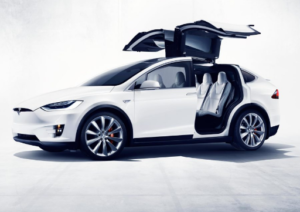THE AUTOPILOT SOFTWARE built into Tesla’s electric carsalready offers a glimpse of the future, with what feels likeautonomous driving on the freeway. Today the company announced a suite of upgrades to the system, to be pushed over-the-air to existing cars over the next couple of weeks.
“This is quite a massive enhancement,” said Elon Musk, Tesla’s CEO, at a press confernce. “I wish we could have done it earlier.”
Chief among the improvements in Autopilot Version 8.0 is increased reliance on the radar system in the company’s Model S and Model X. The sensors have been in Teslas since October 2014, and the new software will download and run on existing hardware—although Musk says it was quite a job to get it to fit.
Autopilot builds a picture of the world around it using a forward-looking camera mounted near the rear view mirror, a radar in the front bumper, and 12 ultrasonic sensors around the vehicle. Until now, the car’s computer has used the image from the camera as the primary information source.
Tesla says that the new software shifts that burden to the radar, unlocking six times as many information points per object with every reflected pulse. Ten times a second the radar will ping outward, and then assemble those reflections into a 3D image as the car moves.
Radar is a bit of a blunt tool when it comes to imaging, but Tesla has improved the signal processing to make it work, the company says. The repetition is helpful too; it’ll increase the car’s confidence that a reflected pulse is a real object. Obviously not seeing an actual object would be a big deal—the car might hit it. But false positives are almost as bad. An autonomous car is useless if it continually slams on the brakes for no reason.
Maybe even more importantly, the cars don’t learn in isolation. “We’re adding 1.5 million miles per day on Autopilot,” says Musk. And the whole fleet learns at once. Even when the system isn’t on, it’s gathering data. The radar could be triggered by a sign over the road, and think there’s something in the path. The radar image still gets geotagged, but if the driver doesn’t manually brake, and neither do several other Teslas at the same place, every Tesla everywhere will learn that it is not something to worry about.

